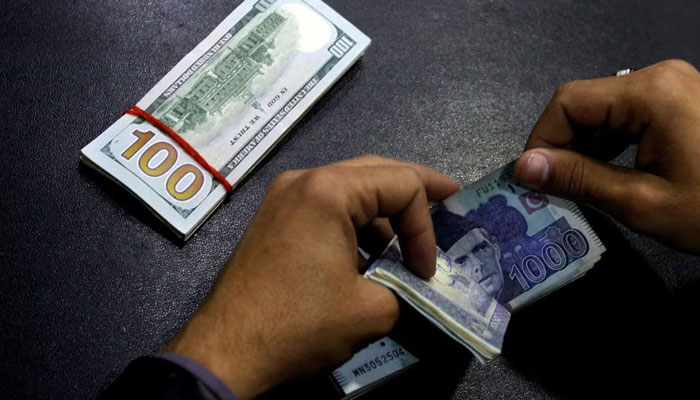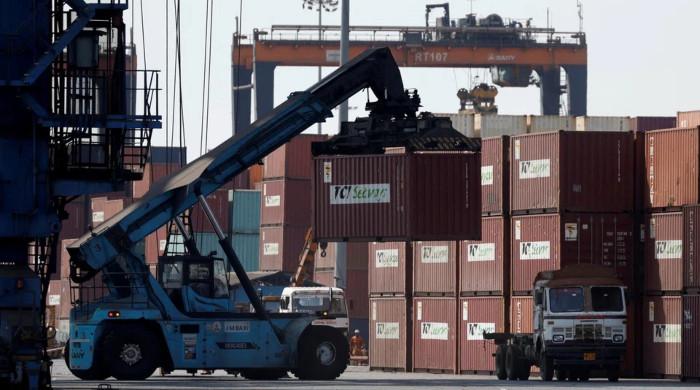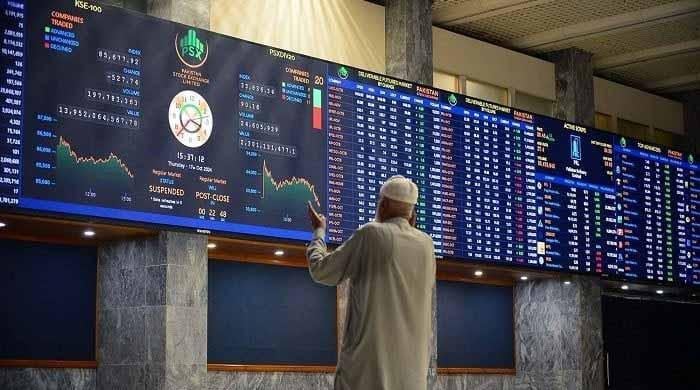Ministry laments high interest rate hiking markup payments
Inflation to further ease out to 26.5-27.5% in February 2024, govt says
February 01, 2024

- Inflation to ease out to 26.5-27.5% in Feb 2024.
- It remained at around 27.5-28.5% in Jan 2024.
- Expenditure expected to remain under pressure.
ISLAMABAD: Raising a red flag over the massive surge in expenditures, the finance ministry conceded on Wednesday that the significant challenge was higher mark-up payments due to increased policy rate, leading to a sharp rise in current expenditures.
The second challenge, admitted by the government, was elevating inflationary pressures, saying that inflation is anticipated to remain at around 27.5-28.5% in January 2024 and further ease out to 26.5-27.5% in February 2024.
"The significant challenge is higher mark-up payments due to the high policy rate leading to a sharp rise in current expenditures. To address this challenge, the government is putting all its efforts into controlling non-mark-up spending through austerity measures, which is evidenced by the rise in primary surplus during Jul-Dec FY2024.
“However, due to mounting mark-up payments in response to high policy rates, the expenditure is expected to remain under pressure during the current fiscal year,” the finance ministry admitted in its monthly report released on Wednesday.
About inflation, the report says that elevated prices of perishables and vegetables, coupled with increased utility costs (electricity and gas), have contributed to the inflationary pressure.
The surge in onion export orders following the Indian ban has strained local supply and increased domestic prices. Specific commodities, such as tomatoes, witnessed price hikes due to supply disruptions caused by severe weather, intensifying the demand-supply gap. Similarly, chicken prices rose due to reduced supply, particularly from controlled sheds experiencing higher input costs.
However, the government has taken measures to reduce onion export by increasing the minimum export price and also lifted the ban on soybean import which would ease the supply situation of perishables and chicken. In January FY2024, there is a slight moderation in the inflation outlook compared to the preceding month.
Though, yet, challenges persist in the form of supply chain disruptions and increased utility prices, the decline in fuel cost offers a promising counterbalance, potentially mitigating the overall impact on consumers and production sectors.
The performance of agriculture sector is depicting an uptick compared to last year as crops have performed well. Wheat being the major crop of Rabi 2023-24 is expected to perform well as cultivation surpassed the target. On the downside, unprecedented weather shocks may affect productivity as January 2024 is the coldest and important month for the early growth of Rabi crops in most of the agricultural plains of the country. Farmers may take precautionary measures to protect their crops, vegetables, orchids and livestock from the harmful impacts of expected extremely cold weather conditions.
The LSM cycle usually follows the cyclical movements in main trading partners, but since it is focused on major industrial sectors and not on total GDP, it is somewhat more volatile than the cyclical component of GDP in Pakistan’s main export markets. The economic conditions in Pakistan’s major export destinations have shown signs of improvement, as evidenced by the aggregate CLI in those markets. It has improved and reached its potential level signaling a favourable external environment that supports the industrial performance of Pakistan.
At the domestic level, despite persistent challenges, the industrial sector is showing signs of recovery and government measures to stimulate growth, particularly in SMEs, are providing impetus. This is evidenced by the MoM 3.63% growth in the LSM during November 2023, and YoY increase of 1.59%.
The upward trend has been observed on account of revived domestic economic activities and better export demand in Pakistan’s main export markets. On the other hand, imports have been contained by 6.1% and 0.1%, on MoM and YoY basis, respectively. Another contributing factor in current account surplus is workers’ remittances – posted expansion of 5.4% and 13.4% on MoM and YoY basis, respectively. The revival in domestic economic activities along with stable exchange rate are contributing to external sector stability. It is expected that continuation of these developments and policies to increase exports and remittances will further translate into improved trade balance and current account during the second half of FY2024.
In December 2023, the balance of payment (BoP) data shows momentum of external sector stability as evident through current account which turns to a surplus of $397 million, the surplus value observed after June 2023. This development is mainly due to the contained trade deficit - which decreased by 25.5% and 23.5% on MoM and YoY basis.
On the fiscal side, the revenue performance is encouraging, however, there is significant pressure on expenditures attributed to higher mark-up payments. Despite this, the government is taking measures to manage non-mark-up spending, which is evidenced by continuous improvement in primary surplus. Pakistan has recently received a tranche equivalent to US$705.6 million, following the successful completion of the first review by the Executive Board of IMF under Standby Arrangements (SBA) – which is providing market confidence and exchange rate stability.
For the outlook, it is expected that economic activities will further strengthen during second half of FY2024 -- contingent on the continuation of sound and prudent economic policies which will gear toward achieving the set growth target for the current fiscal year, the report concluded.
Originally published in The News









